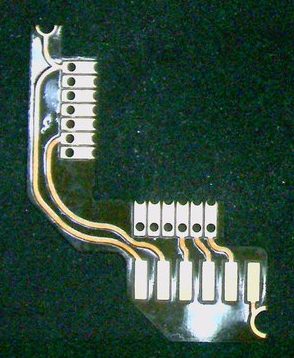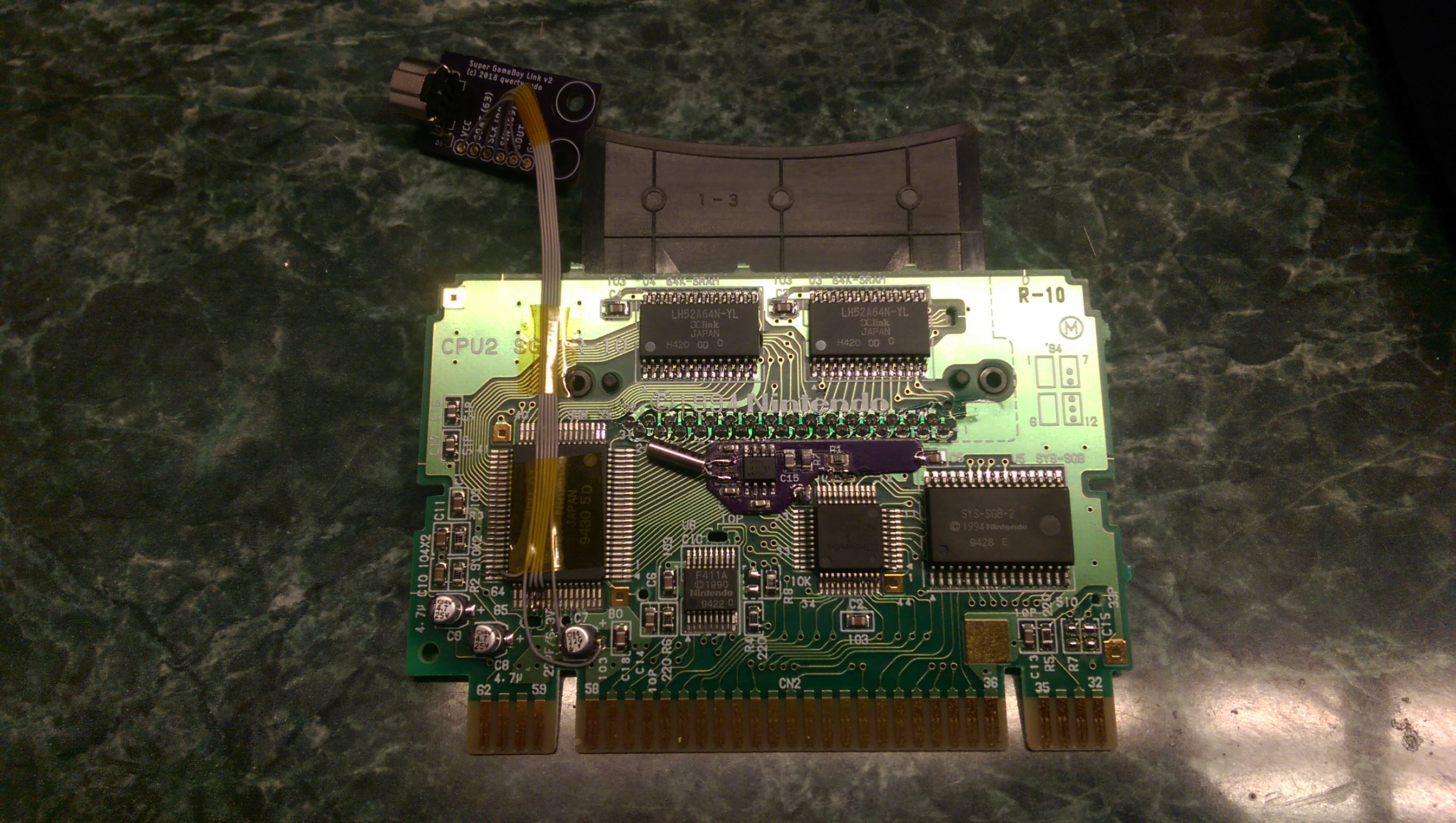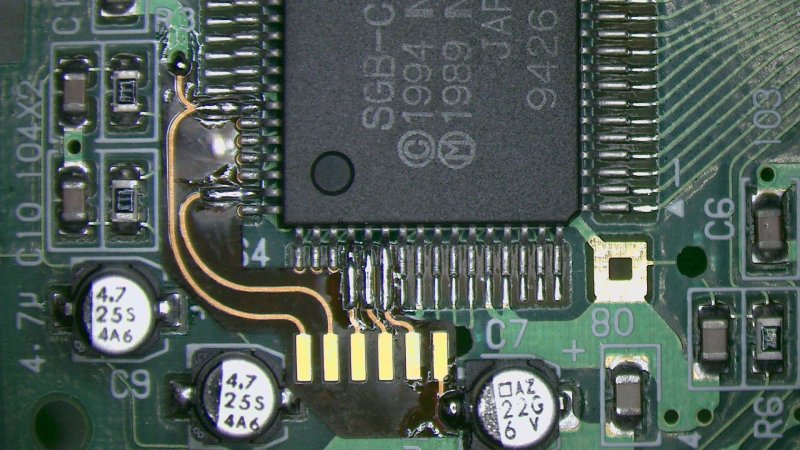We love watching the creativity unleashed by the democratization of once-exotic technologies. The casualness by which one can order a cheap, small run of PCBs has unlocked a flood of fine pitch components and projects which look commercial quality even with a total build volume of one. Now the once mythical flex PCB has been falling from it’s stratospheric pricing and with OSHPark’s offering it feels like we’re at the inflection point. [qwertymodo] leveraged this by creating a beautifully twisted flex to add link port support to the Super Game Boy
 In the mid-90’s Nintendo released the Super Game Boy, a cartridge for the SNES which allowed you to play Game Boy games on the big screen. Each cartridge was in fact an entire Game Boy with the appropriate hardware to present it in a way the host console could interface with, but missing some of the hardware a standalone Game Boy would include like a link port to connect it to another system. This mod fixes this limitation by bridging the correct pins out from the CPU to a breakout board which includes the link port connector. For general background on what’s going on here, check out [Brian]’s article from April describing a different mod [qwertymodo] executed to the same system.
In the mid-90’s Nintendo released the Super Game Boy, a cartridge for the SNES which allowed you to play Game Boy games on the big screen. Each cartridge was in fact an entire Game Boy with the appropriate hardware to present it in a way the host console could interface with, but missing some of the hardware a standalone Game Boy would include like a link port to connect it to another system. This mod fixes this limitation by bridging the correct pins out from the CPU to a breakout board which includes the link port connector. For general background on what’s going on here, check out [Brian]’s article from April describing a different mod [qwertymodo] executed to the same system.
What’s fascinating is how elegant the mod is. Using a a flex here to create a completely custom, strangely shaped, one-of-a-kind adapter for this random IC, in low volume is an awesome example of the use of advanced manufacturing techniques to take our hacks to the next level. It reminds us a little of the method [Scotty] used to add the headphone jack to his iPhone 7 back in 2017. At the time that seemed like a technology only available to hackers who could speak a little Mandarin and lived in Shenzhen.
Detailed information on this hack is a little spread out. There is slightly more info in these tweets, and if you have a Super Game Boy crying out for a link port the adapter flexes are sometimes available here. Look beyond the break to see what the mod originally looked like sans-flex.
















Very cool! I guess an extra-fancy version of this could use the flex PCB itself as the cable, so that it just plugs in to the board with the link port, trading some $ for easier assembly.
The cost would have been over $50 per board, at that point it would be cheaper to just buy a Super GameBoy 2, which already has a link port. The whole reason this mod works out economically is because I was able to do the bare minimum necessary in the smallest possible footprint. Breaking it out to parallel 0.05″ pads means you can use a standard flat IDC cable to connect all of the signals easily in one go, and the actual link port board has the pads to do the same on the other end.
Anyone else notice OshPark uses 0.030″ boards by default now? The quality has diminished greatly over the last year. Lots of tearing too at the mouse ears. Any alternatives stateside?
Yes I have found the oshpark quality to be dropping at an alarming rate. One recent order that came back from them one of the boards was so badly scratched up it looked like it had been used for moving furnature. Several traces were scratched entirely through resulting in an open circuit.
My solution has been to order from china directly, using pwbway/3pcb or jlpcb depending who is running the best deal at the time. JL pcb seems to be the current winner, $2 for qty 5 100x100mm 24hr turn and $16 for dhl 2-day shipping or $6.33 for surface 2-week shipping.
You both should get in touch with them if you have any issues, they’re sure to make it right.
I’ve never had issues with thin boards or scratches.
MacroFab final assembly is in Houston, TX. They have a really neat interactive cost estimator tool.
this post got me thinking has anyone made a custom flex pcb using a 3d print using a dual extruder with TPU and conductive filament?
So… Raspberry Pi 4 PCIe passthrough anyone?
Should be doable, yes. The most important is a way to disable the usb chip without needing to remove it from the board.